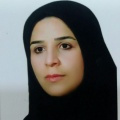| Authors | حدیث کردزنگنه، فرشته جوکار کاشی |
|---|---|
| Conference Title | International congress of the new aspects of applied biology |
| Holding Date of Conference | 2018/10/12 |
| Event Place | تهران |
| Presentation | IN SERIES |
| Conference Level | International Conferences |
Abstract
Dust are fine particles of matter. It generally consists of particles in the atmosphere that come from various sources such as soil, dust lifted by weather (an aeolian process),volcanic eruptions, and pollution. Deserts are the main sources of emitted dust, and highly responsive to wind erosion. Low content of soil moisture and lack of vegetation cover lead to fine particle's release. The aim of this evaluation is to access to a variety of bacteria in the dust. The dusts were collected from different areas include. Khore-2, Bush, ABZ-02, and Ta-31. A surface-spread plating method was used to determine the numbers of microorganisms in the samples. The samples were serially diluted up to 10−6 . From the 10-3, 10-4, 10-5 and 10-6 dilutions 100 µl of each, were surface-plated on modified nutrient agar containing KCl, NaCl, MgCl and MgSO4. We have selected and subcultured different colonies grown on media, and used them for further investigation. The bacterial strains were identified by color, size and morphology of the colonies and biochemical tests. Our results exhibited Khore2 contains: 6 gram- positive bacteria and 1 gram-negative bacteria. Bush has one gram-negative bacteria. ABZ-02 has 6 gram-positive and 2 gram-negative bacteria. Ta-31 have 3 gram-positive and 3 gram-negative bacteria
